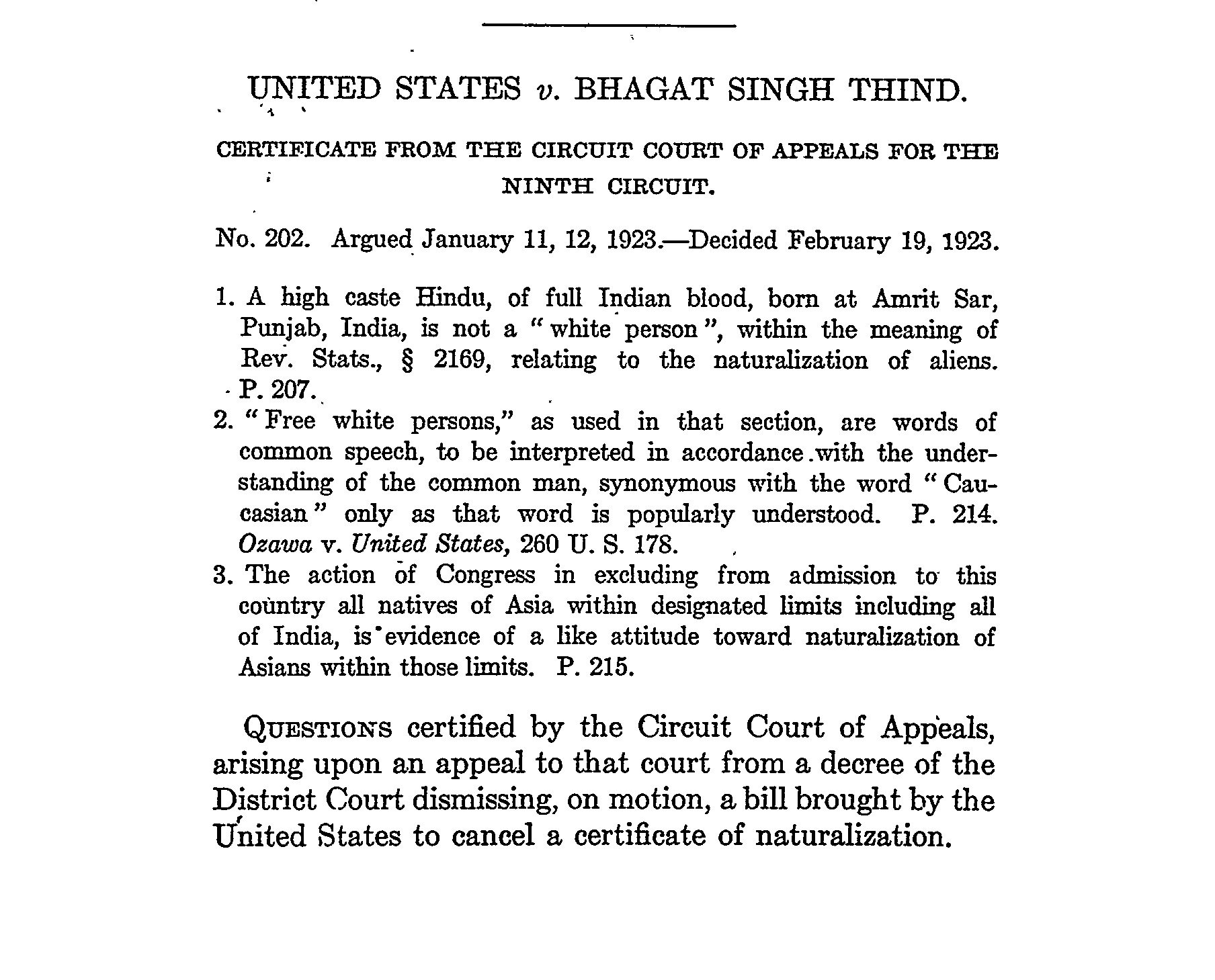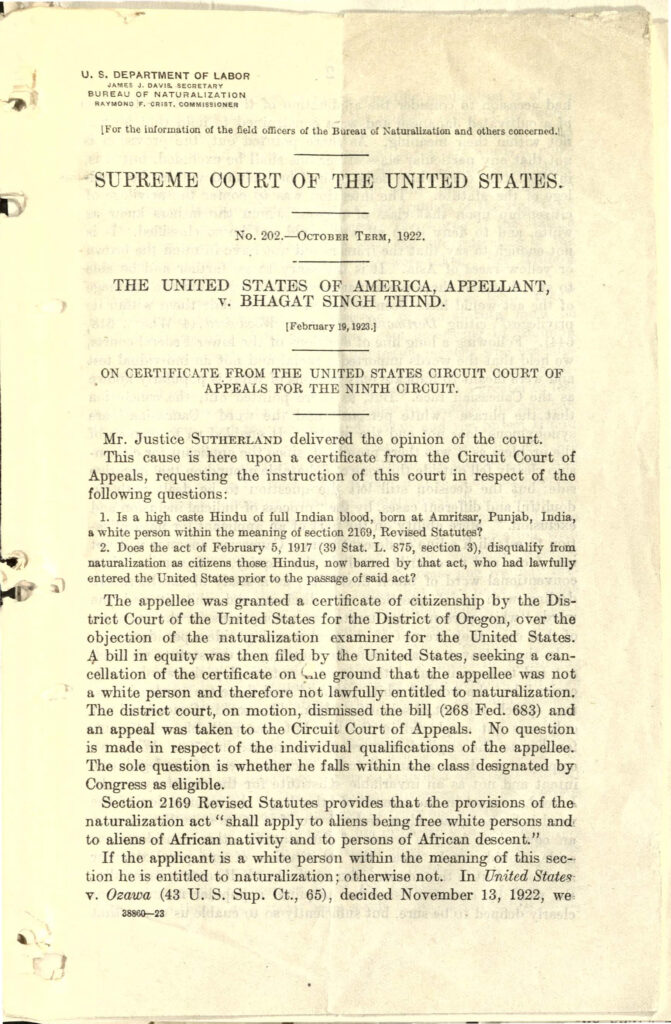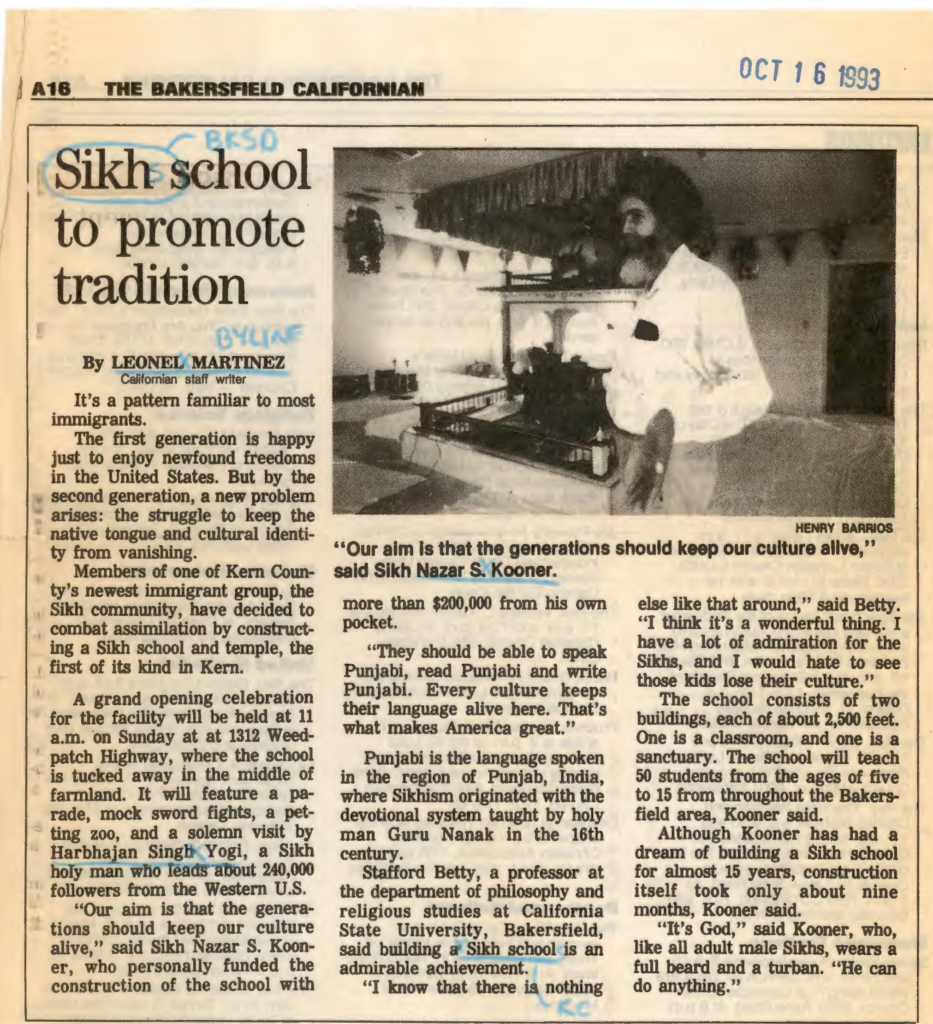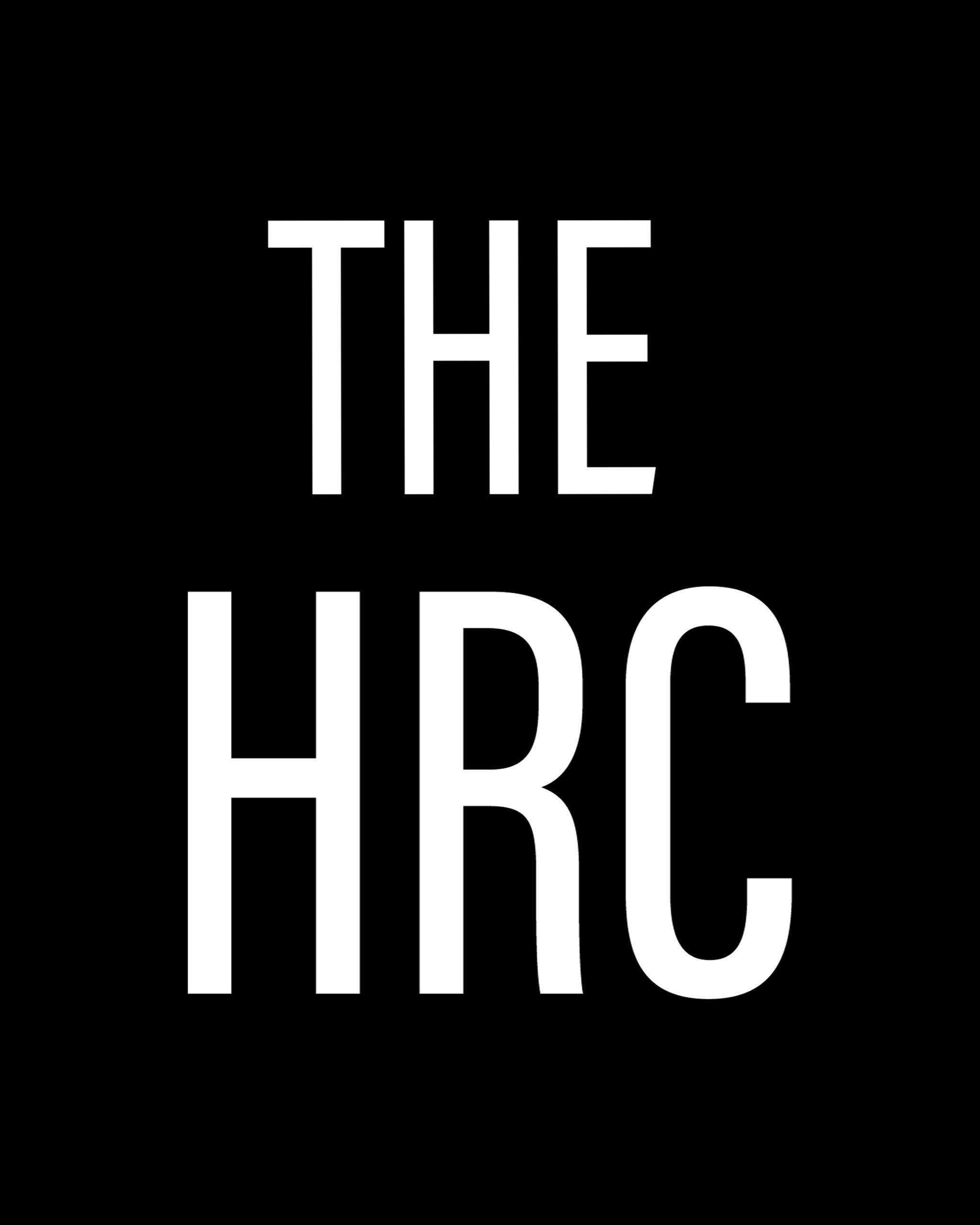Before 1938 – Buying on Contract – Covenants – East Bakersfield
Eminent Domain – Moving into a Neighborhood – Neighborhoods – Public Housing
Resources – Rumford Fair Housing Act – Suburban Expansion – Zoning
Coming from India, the Punjabi Sikh community found their new home in California. Between 1899-1914, approximately 6,800 Indians from the Punjab province came to America, and just as in India, many grew up to be farmers. A majority of those who came to California worked in agricultural fields. To them, California was reminiscent of Punjab; they grew the same crops as they had in India such as cotton, almond, rice, etc. Although they found agricultural labor and farming reminiscent of Punjab, their transition to California was not easy.
Many laws were implemented to alienate Punjabi people, like the “… Immigration Act of 1917 which set up the Asiatic Barred Zone in which India was included.” This stopped immigration from South and Southeast Asia which was similar to the Chinese with Chinese Exclusion Act. It did not end there; California’s Alien Land Law initially passed in 1913 to curb Japanese and Chinese migration to the state was later extended to include Asian Indians in 1923.

That same year, the Supreme Court also decided that though the Indians were considered Caucasian, “…they were not white” and as such were ineligible for U.S. citizenship through naturalization. This was a result of the Supreme Court case, United States v. Bhagat Singh Tind, which determined that overall, Sikh people did not have the characteristics of a Caucasian and caused a ripple effect of many losing their citizenship due to falling under the definition of “Caucasian.” Punjabi migrants’ goals were to own land and farm like they had in India, but these laws made it difficult.

After the laws were invalidated in 1952, there was room to grow into different fields. Many started their own businesses or pursued education. They were able to grow as a community and finally establish their roots in California. Naturalization records show no mention of Sikh presence in Kern County until the 1960s and 1980s, which show Punjabi in Taft and Bakersfield. The 1990s reveal few newspaper clippings on how Punjabi built their community. For instance, the first Sikh school on Weedpatch Highway was built in the middle of a farm to ensure that their culture stayed alive with new generations.

Using their own pocket money and donations, they were able to construct the first Sikh School in Kern County. Over time, the Punjabi Sikh community has grown in Bakersfield and now there are seven gurdwaras (Place of worship ) to serve the community. One of many ways the Sikhs serve the community is through langar ( Dining hall in gurdwara ). Regardless of religion, caste, economic standing, gender, etc., people are served free food. It is intergraded in the Sikh community to form seva (Selfless service) for those who are in need of help. For instance, during the pandemic, Sikh Riders of America teamed up with volunteers from the River Lakes Community to build face shields for front-line workers. They also established a few businesses over time, such as restaurants, grocery stores, and clothing stores. Eventually, the Punjabi Sikh community made themselves a home in Bakersfield, California.
Take a virtual tour of the Gurdwara Guru Dashmesh Darbar, 7000 Wible Rd, Bakersfield, CA 93313
https://www.csub.edu/~clivingston/web/3dTours/Gurdwara/
Special Thank You to Monique Dhaliwal and Prabhdeep Singh Sibia for inviting us to visit and photograph Gurdwara Guru Dashmesh Darbar

